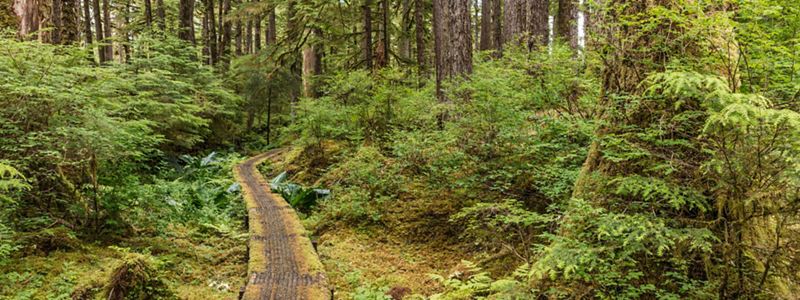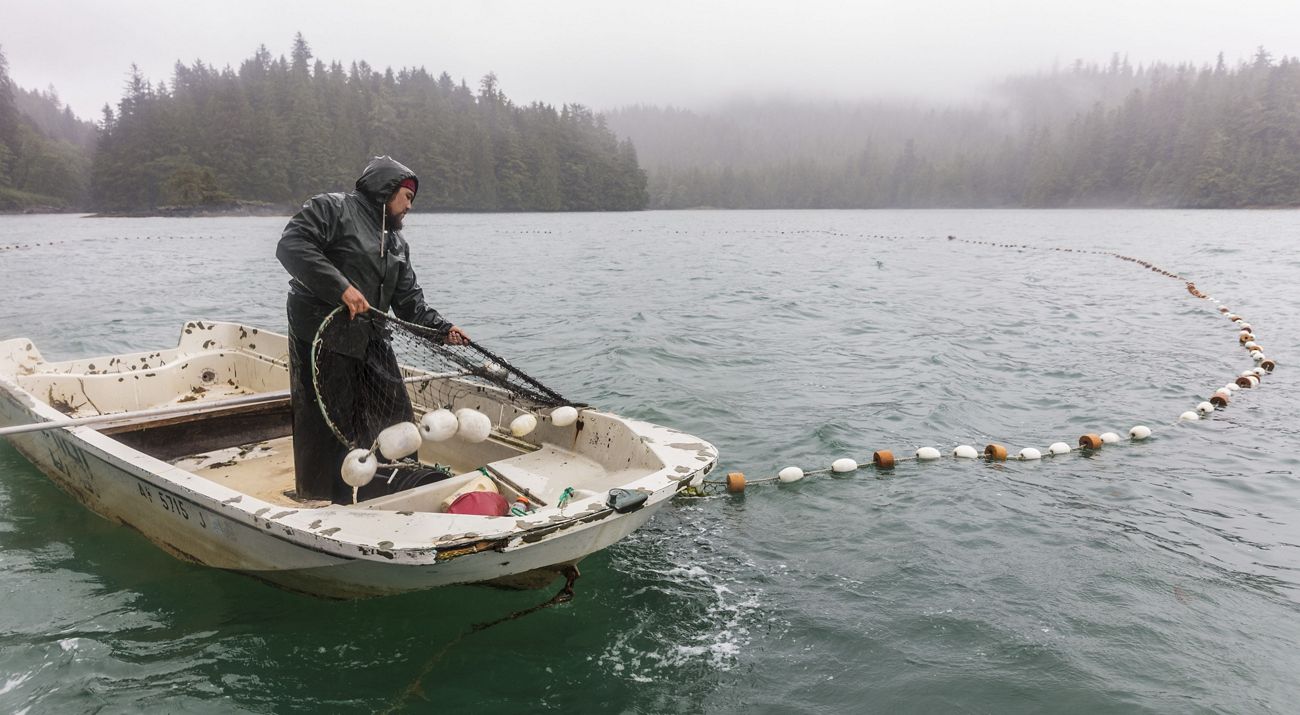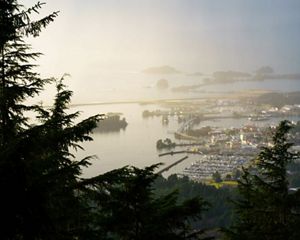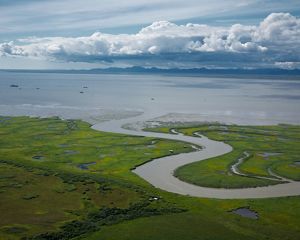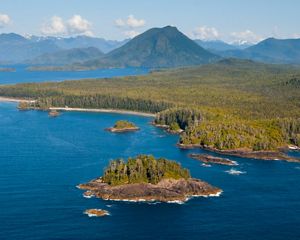In Southeast Alaska, lush forests in the Tongass rainforest grow up mountain slopes and down the banks of cascading salmon streams to the edge of the sea. These towering forests comprise the heart of the largest intact coastal temperate rainforest on Earth and are a significant carbon storehouse for the planet. These forests, along with countless streams, lakes and estuaries, support healthy populations of wild salmon, marine mammals, eagles and bears.
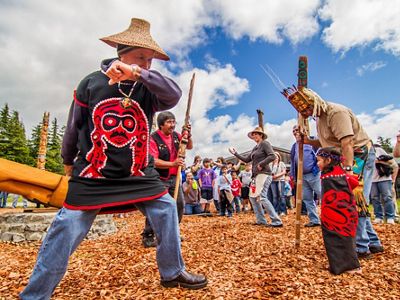
The Tlingit, Haida and Tsimshian peoples have lived here since time immemorial, and the ecological richness of this place continues to shape the local way of life. Known in Tlingit as Haa Aaní, or “our lands,” this is home to a vibrant wealth of Indigenous tradition and culture.
Quote: Richard (Chalyee Éesh) Peterson
Just as deeply embedded as the roots of a tree, our core identity as Indigenous people is to be good stewards of the land, air, and sea.
But the Tongass rainforest has been a hotbed of environmental conflict, as the recent conflicts over giant old-growth timber still reverberates through communities. The conflict has not resulted in durable protection of these forests and their carbon values. It has also ignored or vilified the Indigenous peoples of this place, who have participated in the timber industry to make use of one of the few viable economic opportunities for their communities.

Understanding that a new path was needed, TNC has worked with local tribes and institutions, including Sealaska, the Alaska Native corporation that is the region’s largest owner of private timberlands, to launch a regional network based on a collective impact model. The resulting Sustainable Southeast Partnership has successfully reshaped how the region works together on shared goals.
“For too long has Southeast Alaska been a place of environmental conflict,” said Christine Woll, TNC’s Southeast Alaska program director. “This region has unparalleled ecological values and globally significant carbon stocks. But the solutions to conserving these lands and waters for future generations must come from the communities. The Seacoast Trust can be a model for other places around the globe where conflict has historically obscured equitable, community-led solutions.”
Advancing these interconnected priorities has built the framework for a just transition toward community and environmental sustainability—and away from the limited short-term gains of an extractive economy. This partnership may have emerged as a surprising alliance to many when it formed more than a decade ago, but it now has a proven record of achievement in communities throughout the region.


In 2021, Sealaska and the Tongass National Forest both announced intentions to transition away from large-scale old-growth logging. Sealaska is shifting toward an approach focused on healthy communities, healthy oceans and a sustainable future while supporting the carbon sequestration projects of smaller Alaska Native corporations. The U.S. Forest Service has pledged new support for the community-based conservation of the Sustainable Southeast Partnership.
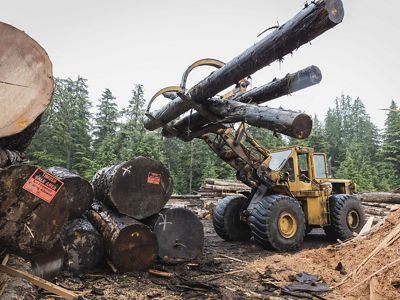
TNC is now assisting Sealaska, the Central Council of the Tlingit and Haida Indian Tribes of Alaska, and other regional partners to co-create a new permanent funding mechanism, the Seacoast Trust, to fully support and expand this partnership for generations to come.
To help establish the Trust, Sealaska committed $10 million and The Nature Conservancy in 2022 contributed $8 million from its Bezos Earth Fund gift and from other donors, and the fund received another $2 million in support from the Rasmuson and Edgerton foundations. We are calling this fund the Seacoast Trust, and it’s a new model for how Indigenous-led conservation can be financed and for the future of this landscape. In mid-September, TNC Board Chair Fran Ulmer helped launch The Seacoast Trust in an inspiring community event with Sealaska and local Indigenous leaders, which you can watch in the video below:
“Transitioning our communities to take advantage of sustainable economic opportunities will require support from many partners,” said Sealaska President and CEO Anthony Mallott. “We must ensure that what comes next is stable, regenerative and offers just outcomes to communities who have faced economic crises for decades. We are searching for economic and environmental balance that can come from a focus on collaboration, inclusive growth, social justice and indigenous stewardship.”
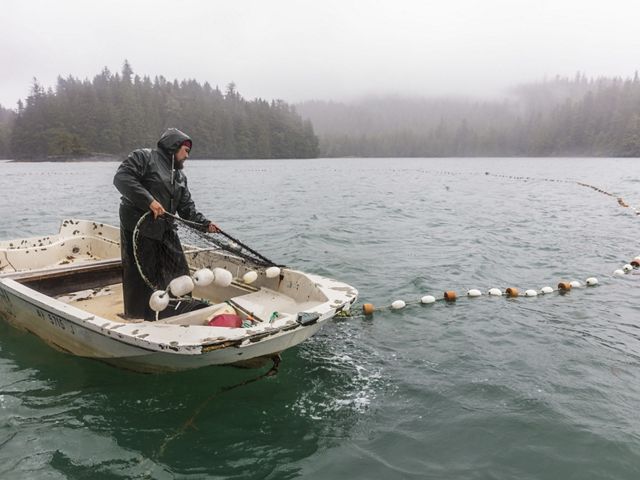
The Seacoast Trust seeks to build an enduring foundation for future generations. The trust will provide annual funding support to communities and support Indigenous stewardship activities, such as the restoration of salmon streams and traditional use areas, strengthening food security, establishing new carbon projects, building energy independence and investing in a diversified local economy.
Outcomes of the Seacoast Trust will be defined collectively, with Indigenous communities’ voices at the center. We are centering people in conservation and are working to heal the relationship with the land and between conservationists and Indigenous peoples, working to build a new future for next generations.
Seacoast Trust Guiding Principles
- Respect community voices and uphold Indigenous governance and leadership
- Envision the next 100 years by planning with the next generation
- Collaborate with empathy, generosity, and purpose
- Balance economic, social, and environmental wellbeing
- Value the integrity of all knowledge systems, including those anchored in 10,000 plus years of Indigenous history, traditions, and stewardship
“The Seacoast Trust is about working together and weaving Indigenous values into a new shared vision for Southeast Alaska,” says Steve Cohn, Alaska state director of The Nature Conservancy. “Our partnership is financing a powerful collective effort capable of launching transformative natural climate solutions that serve people and nature in communities throughout the Tongass. This is a bold and new way forward that helps give Southeast Alaska’s next generation a more secure future. Seacoast Trust is the right way forward because it builds a more enduring future for people and nature.”
The Seacoast Trust will provide annual funding support to Alaska Native communities in achieving their goals for community well-being and conservation. It will enable roughly 2 million acres of Forest Service and Alaska Native corporation-owned lands to become aligned under community authority. In the first three to five years of the fund, revenues will go toward expanding on proven regional programs the Sustainable Southeast Partnership has already established.
Quote: Christine Woll
The Seacoast Trust can be a model for other places around the globe where conflict has historically obscured equitable, community-led solutions.
One hundred years from now, we will know the Seacoast Trust has succeeded when Southeast Alaska forests and waterways are intact, Indigenous peoples and cultures thrive, and an alternative path forward has been demonstrated to the world.
The Seacoast Trust is showing Alaska, and the world, what conservation can look like: A mutual commitment to Indigenous communities and their hopes and dreams for the future amid the life-sustaining health of the lands and waters that now, more than ever, call for our shared efforts.
Southeast Alaska's Indigenous Culture


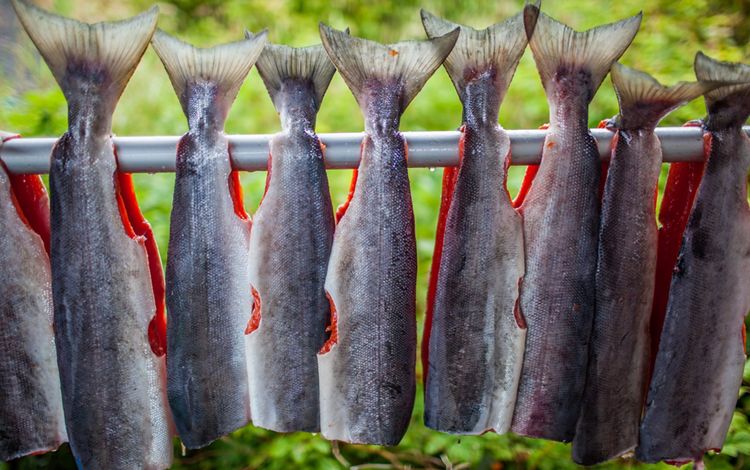
We Can’t Save Nature Without You
Sign up to receive monthly conservation news and updates from Alaska. Get a preview of Alaska's Nature News email
